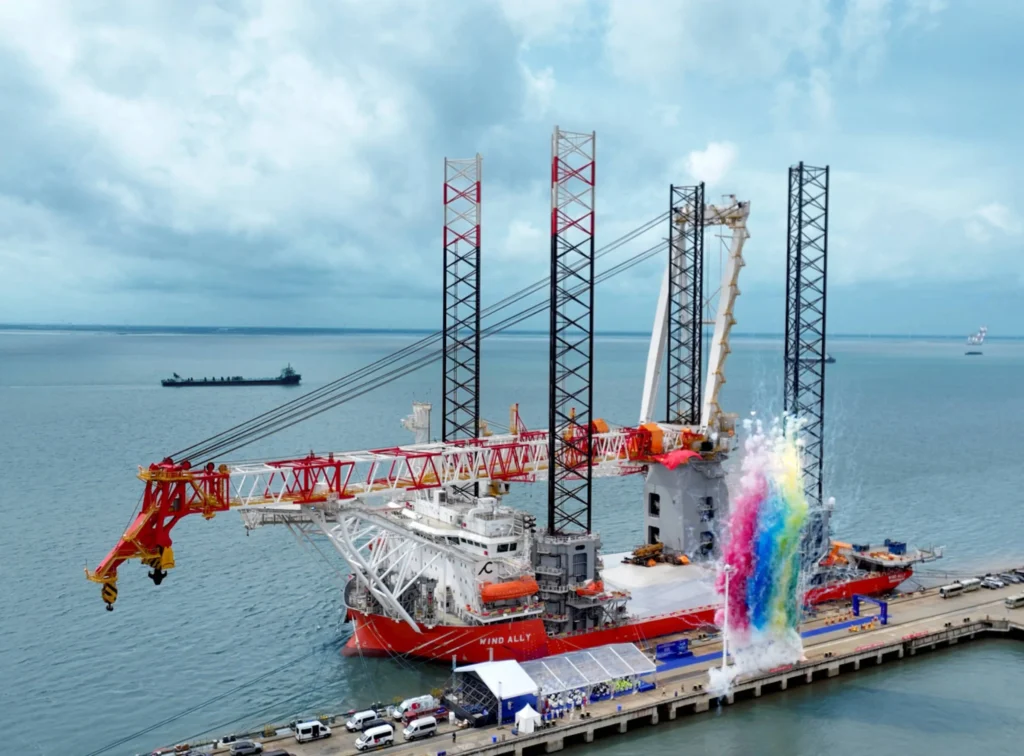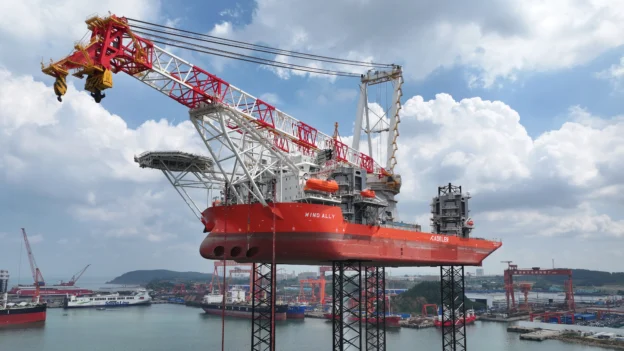Danish company Cadeler officially took delivery of the Wind Ally, its first A-Class vessel designed for offshore wind foundation operations, which enters service ahead of schedule and on budget. This is the ninth active vessel in the company’s fleet and the first of three planned A-Class vessels.
What is Wind Ally Vessel?
Designed to install the largest and heaviest components of modern wind farms, this vessel was built over two years at the Cosco shipyard in Qidong, China, and delivered with more than 3.5 million safe working hours. It has a deck area of 5,600 m², a carrying capacity of more than 18,000 tons and a main crane capable of lifting more than 3,300 tons.
Thanks to this, it can transport and install up to 6 XXL monopile foundations in a single trip, providing highly valuable operational flexibility in the market.

What will be your first project?
The deployment of the Wind Ally is scheduled for the Hornsea 3 wind farm wind farm in the North Sea, a project developed by Ørsted. This project is key for several reasons:
- For the first time, Cadeler will assume full responsibility for the transportation and installation (T&I) of the monopile foundations. Previously, the company had already installed foundations, but did not assume full responsibility for the process.
- Once completed, it will become the world’s largest offshore wind farm, with a capacity of 2.9 GW.
Why is this news important?
This delivery represents more than just the addition of a new vessel to the company’s fleet, it marks its entry into the foundations business as a full service provider, a strategic move for which they had been preparing for more than a year, creating a new department and designing specialized vessels.
Cadeler and Ørsted have worked together on numerous previous projects, including the Hornsea 2, Borkum Riffgrund 1 and West of Duddon Sands wind farms, which has cemented the mutual trust between the two companies. All of this translates into highly skilled vessel services to install the next generation wind farms that will support the global energy transition.
Source and Photo: Cadeler.

